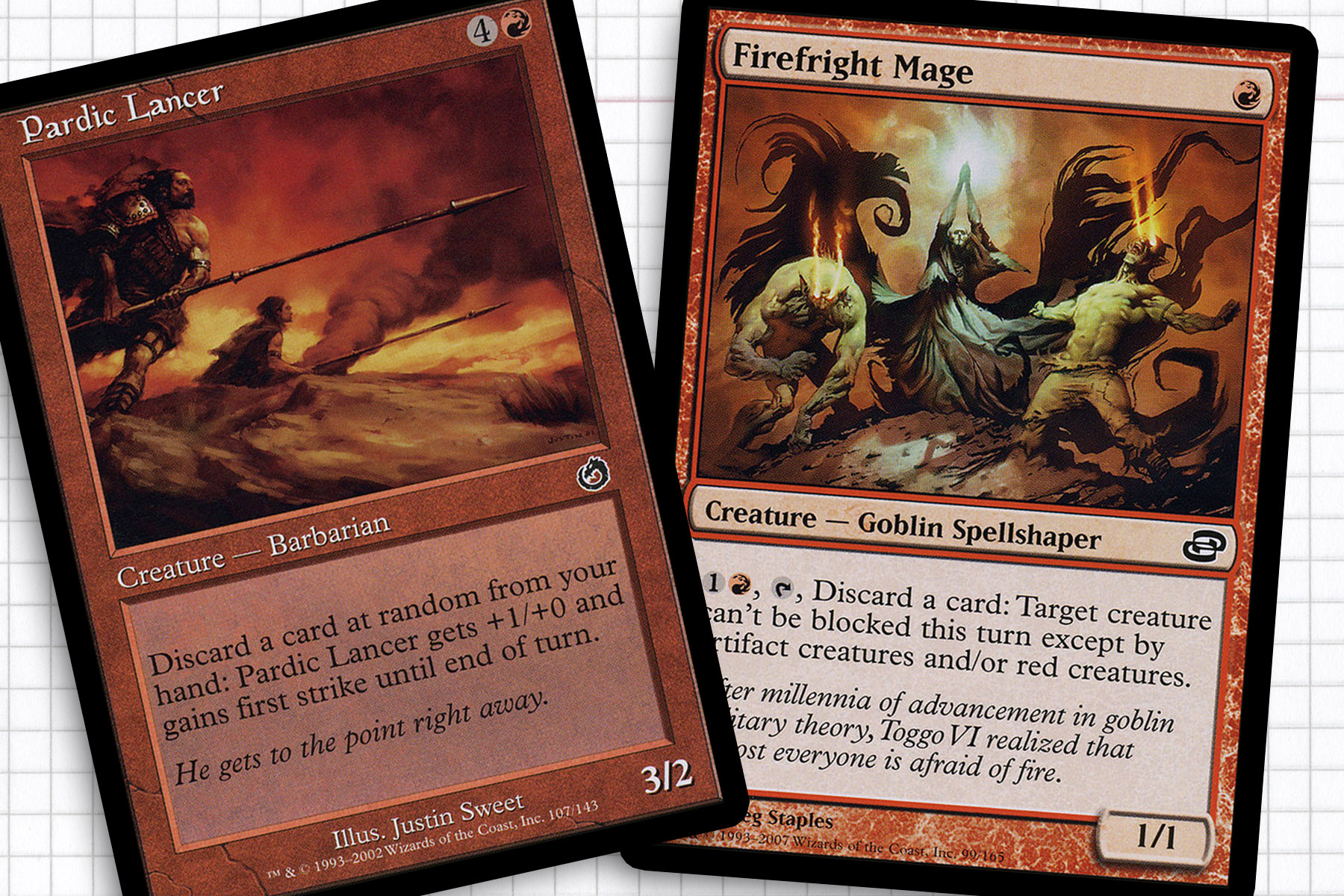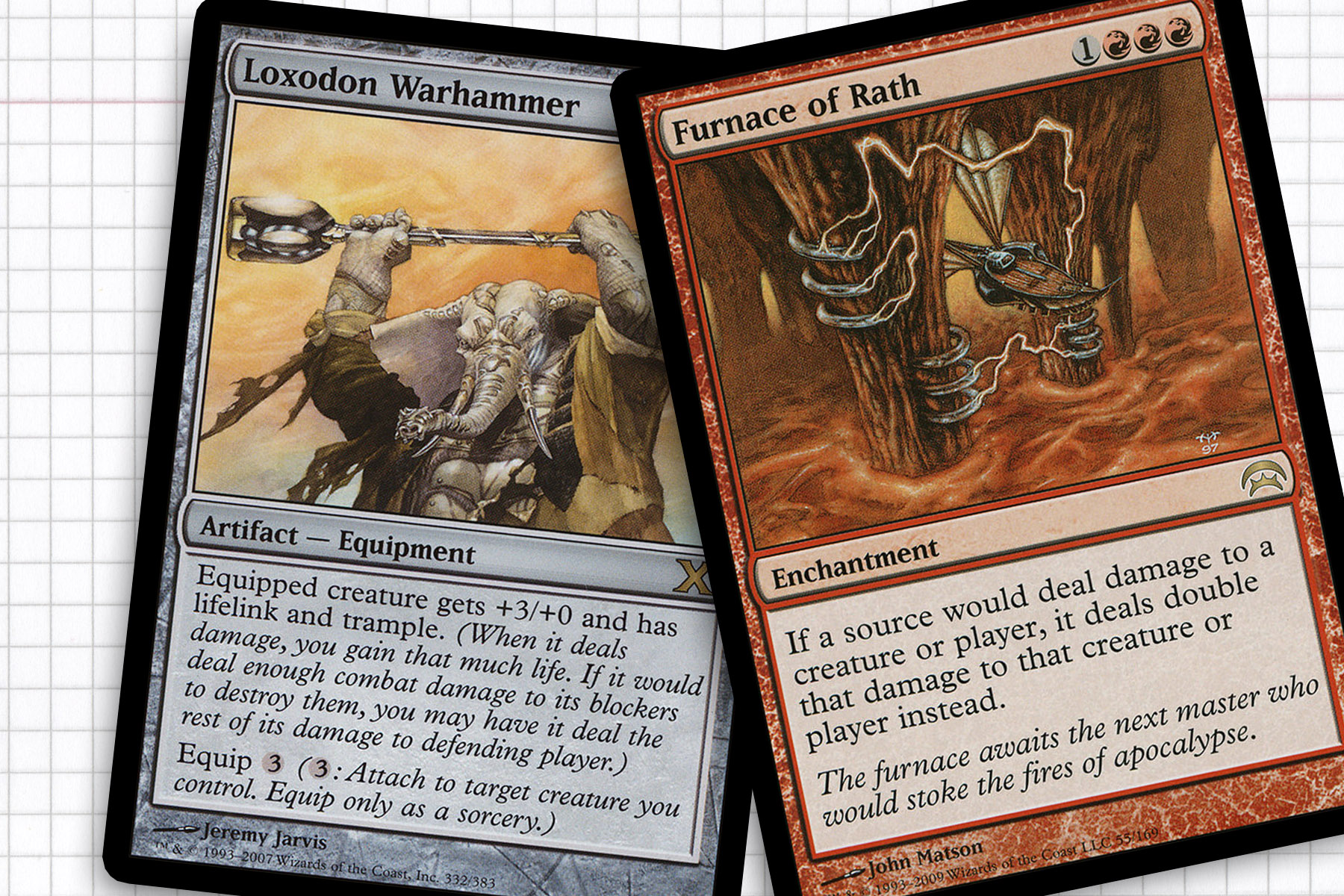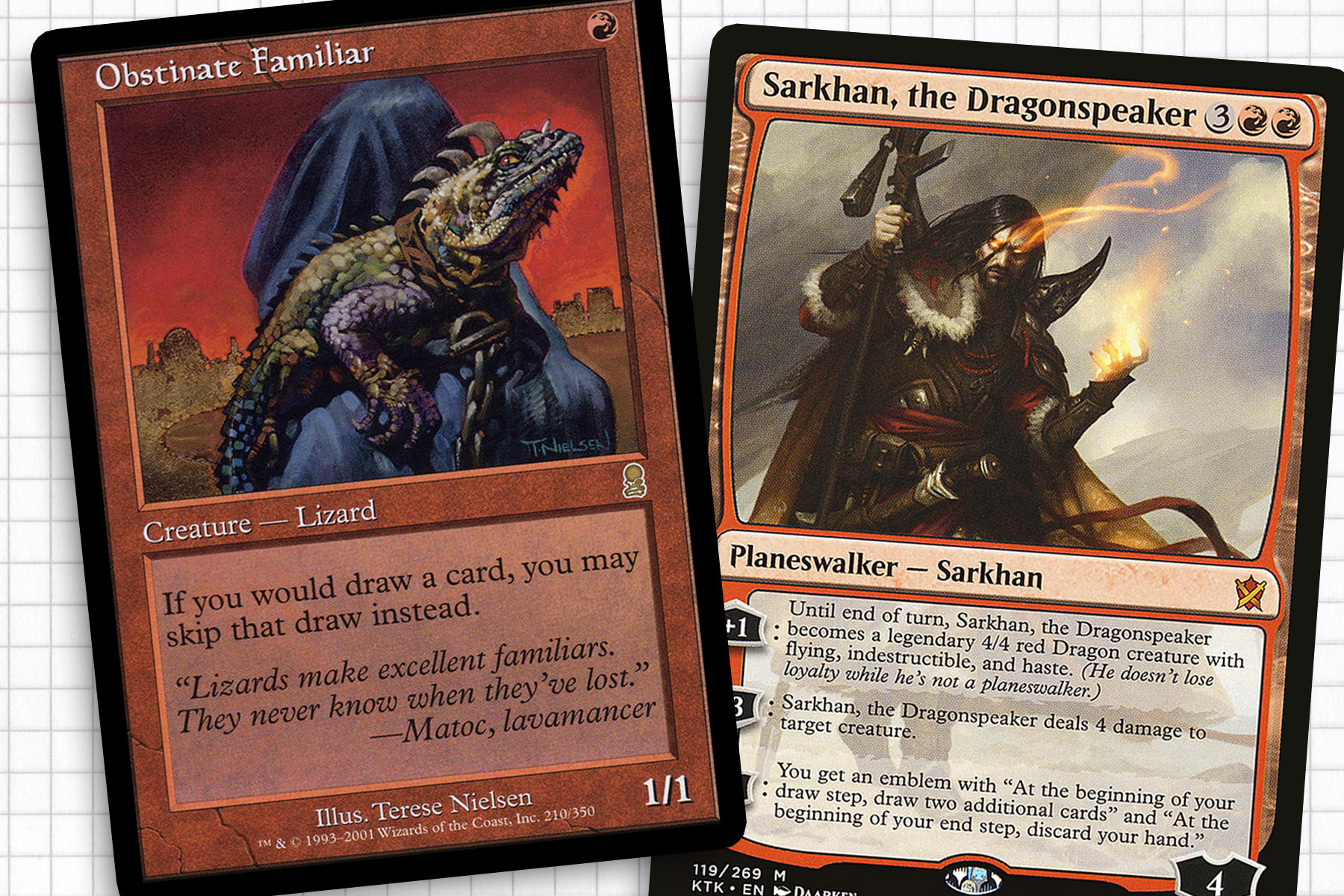One of my favorite things about Commander is that you don’t always have to build toward the most optimal deck. As you progress in Magic in general you tend to learn when it’s best to side with the higher variance, but with Commander you’re often being encouraged to go against the grain for style points or to catch others off guard.
There are certain themes that existed outside of my tenure with Magic—this week’s example: spellshapers—that I’ve always been intrigued with, but never outrightly found a good use for. There was a time when I built a Madness deck around the Olivia, Mobilized for War and made great use of spellshapers there. But they were a sub-theme and not necessarily filling out the deck with the same level of importance that I always envisioned in either a 60 card format or Commander. I think the biggest flaw of the deck was that it would run out creatures very aggressively, but lose steam quickly with no solid plays after the third or fourth creature entered the battlefield. Today with Hazoret the Fervent, I think I finally found both my spellshaper deck hiding in plain sight and a deck that can keep progressing its own game plan after becoming empty handed.
Hazoret the Fervent
Hazoret is the Amonkhet god of zeal. She is responsible for the final trial, slaughtering the winner with her spear to reward them with the God-Pharaoh’s presence. Hazoret’s ideal of zeal encompasses powerful emotions as well as religious intensity. Prior to Bolas’ corruption of Amonkhet, however, she represented compassion and inspiration.
I think it was a very good call by Wizards to not design the Amonkhet gods the same way they designed the Theros Gods, allowing for some difference in design space and feel. Hazoret is the red-aligned god known for currently being a pretty big thing in Standard; but in terms of lore, I’m not sure how Hazoret’s ability ties to the way she is revered in the story. She brings me back to the glory days of the original Ravnica, where I first tried to understand the benefits of constantly being without cards playing hellbent.
Hazoret’s ability reminds me of a non tapping spellshaper ability, so its no surprise then that I would want to combine her with spellshapers as a way to take advantage of an entire mechanic of disadvantage. This is the kind of deck that not only wants to take advantage of the flashback, unearth, and madness mechanics. It also rewards the use of Chandra Ablaze—who should see more play anyway—and for redundancy, Bedlam Reveler as ways to reduce our hand size in fun and interesting ways. From the moment she was previewed, I have had a want to use her at the helm, but just never thought outside the box.

Staying in Shape
Coming to us out of Mercadian Masques block, spellshapers were narrowly focused spellcasters who devote themselves to perfecting a single spell or selection of spells, relying on their mastery of their focus to make up for their lack of versatility. In game they are creatures who effectively turn any card into your hand into a specific spell, such as Dark Ritual (via Bog Witch) or Rampant Growth (via Silverglade Pathfinder). They were brought back during Time Spiral block, this time with more design space like creating token creatures—Sparkspitter or Skirk Ridge Exhumer—and mastering more than one spell like Jaya Ballard, Task Mage.
The obvious drawback to this creature type is the natural dependence on card disadvantage, summoning sickness, and the limit to the small pool of copyable spells that Wizards has allow us access to. Luckily, red got quite a few of the better spells that can be very handy in longer games: Seismic Mage is a walking Stone Rain, Latulla, Keldon Overseer a great late game Blaze, and Hammer Mage an overlooked creature that is awesome for Commander. In the opening turns of the game we’re going to want to clear out our hand in preparation for turn four, when we cast our general. With Hazoret, these creatures not only represent specific spells, but play into the game plan by being methods to empty our hand as quickly as possible.
Beyond the previously listed spellshapers, Firefright Mage and Bola Warrior both represent ways of giving our general evasion to keep the game progressing as aggressively as we can make it. Jaya is probably our best asset, as she offers the most diversity while being able to be a great “rattlesnake” card on the table. I would say sequencing our spells may be a little problematic, but I would also recommend that consideration be made to include enchantments like Fervor or, if you like to live dangerously, Mass Hysteria to allow our spellshapers to hit the ground running.
Much like how proliferate was brought back for a single card in Aether Revolt on Skyship Plunderer and Landfall came back on Zendikar’s Roil, mechanics similar to spellshaping has been used outside of Masques block. Several barbarians during Odyssey block employed random discard to improve themselves, like Barbarian Bully or Pardic Lancer, as well as Flowstone Sculpture and Amok offering long term bonuses. Normally the random discard would be a steep drawback, but since we’re prepared for this to always be the status quo, they help us far more than they hurt.

Hazoret’s Fire
The last piece of the puzzle for the core of this deck is how to best take advantage of Hazoret’s activated ability. While mana doublers certainly help, I think it’s best to sure up a plan for how to utilize the damage the best. Having lifelink through Loxodon Warhammer or Batterskull means that the damage we deal will turn into exponential life gain for our long term benefit.
Since life gain is often considered to be overrated in Commander, we can also tunnel our mana towards Dictate of the Twin Gods or Furnace of Rath to allow us to deal massive swaths of damage. This is also where Faithless Looting, Trading Post, or Temple Bell can be fruitful, allowing us to draw more cards after attacking and turning those extra cards into more damage. I would normally feel like this entire scenario is rather presumptuous, but with Hazoret being indestructible, it seems far more viable.

Getting Away Empty Handed
The spellshaper theme isn’t going to carry over to an entire deck list. There just aren’t enough of them, so we’re going to need to employ other methods for emptying our hand. We get the occasional Pyromancer’s Swath or Avaricious Dragon, but in the history of the game we have a shockingly low exploration of the design space. I happen to like Sarkhan, the Dragonspeaker‘s ultimate the most of our alternatives, as it’s an emblem that can’t be dealt with from a permanent that does more than just draw us cards and keep our hand mostly empty. With a few good mana rocks or leveraging flashback spells, I have often gotten the most use out of this interaction in past decks.
While not interacting perfectly with our general, Pyrewild Shaman has some great interactions in the deck, as you can buy it back after dealing combat and string together several activations of spellshapers, Pyromania, or an Ogre Shaman over the course of a turn. Rites of Initiation and The Flame of Keld are cheap ways to empty our hand fast if we find ourselves in game where Howling Mine or Font of Mythos are preventing us from getting our god online. And if we really want to win through style points, Obstinate Familiar or Words of War can proactively ensure we never have our hand too occupied by cards.
This deck ultimately plays in a space I will admit I am not too comfortable with, but often find myself in anyway: playing recklessly to try to gain some advantage on the board. As I am not huge into the Standard metagame, I haven’t put much thought into her. But I suppose this is the biggest upside of Hazoret: she’s at her best when red is doing what it’s built to do, emptying out its hand very quickly, over and over each turn. Not every game of Magic should not skew to the point of Odyssey block, where card advantage is something to be disregarded.
This underappreciated general needs to get more love. The core strategy is admittedly on rails if you want to netdeck a list, but I think a myriad of strategies could emerge with a little creativity and some trips through Scryfall. I like spellshapers, and I love that Hazoret plays like one and feels overall like a more tame Purphoros, God of the Forge. Maybe in the future I will have to examine the other side of the spectrum with Kefnet the Mindful, the secret Moonfolk. But until time, thank you!

